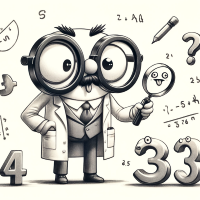Coprime Checker

The Coprime Checker is a web-based calculator that allows users to determine if two given numbers are coprime. Coprime numbers, or relatively prime or mutually prime numbers, are two or more numbers with no common factors other than 1. In other words, their greatest common divisor (GCD) is 1.
Enter two numbers to check if they are coprime. The result will show their prime factors and common divisors.
Enhanced Coprime Checker
| Enter first number: | ||
| Enter second number: | ||
Results: | ||
|
Calculator
- enter the first number
- enter the second number
Results
- It will show whether the numbers are coprime and provide the prime factors of each number, as well as their common divisors
- The history of checks will be displayed in the "History" field. Each entry will show the numbers checked and whether they are coprime
In number theory, two integers a and b are considered coprime (relatively prime or mutually prime) if the greatest common divisor (GCD) of a and b is 1. In other words, a and b have no common positive integer factors other than 1.
Coprime Example:
Numbers: 8 and 15
GCD: The common divisors of 8 are 1, 2, 4, and 8. The common divisors of 15 are 1, 3, 5, and 15. The only common divisor between 8 and 15 is 1.
Conclusion: 8 and 15 are coprime.Not Coprime Example:
Numbers: 12 and 18
GCD: The common divisors of 12 are 1, 2, 3, 4, 6, and 12. The common divisors of 18 are 1, 2, 3, 6, 9, and 18. The greatest common divisor is 6.
Conclusion: 12 and 18 are not coprime.
Properties of Coprime Numbers
Multiples: Any multiple of a number n is not coprime with n itself.Sum: If a and b are coprime, then a and b + k * a (where k is an integer) are also coprime.
Product: If a and b are coprime, and a and c are coprime, then a is coprime with b * c.
Understanding coprime numbers is crucial in number theory, cryptography, and other mathematical disciplines.
Decimal System - Base-10
Base Conversions:
- Decimal to Binary
- Decimal to Octal
- Decimal to One's and Two's Complement Binary
- Decimal to Other Bases
- Decimal to Hexadecimal
- Decimal Fraction to a Hexadecimal Fraction
Fraction and Mixed Number Operations:
- Decimal to Mixed Numbers
- Decimal Fraction to a Proper Fraction
- Fraction Addition
- Mixed Numbers and Fractions Addition
- Mixed Numbers and Fractions Addition - Multiples
- High-Precision Multiple Fraction Addition
- High-Precision Fraction Addition
- High-Precision Fraction Division
- High-Precision Fraction Subtraction
- High-Precision Fractional Exponentiation
- High-Precision Fraction Multiplication
- High-Precision Multiple Fraction Addition
Math Operations:
Number Theory:
- Coprime Checker
- GCD (Greatest Common Divisor)
- LCM (Least Common Multiple)
- Perfect Number
- ---- Prime Factorization
- ---- nth Root for Fractions
- ---- nth Root - Advanced